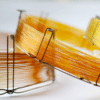When your FID detector fails to light, or fails to stay lit, it’s not only frustrating for the operator but negatively impacts productivity in the laboratory. In this #TechTip we asked William Gragilla, GenTech Scientific Field Service Engineer, for some tips to quickly ignite your FID.
Have questions for Will G., as he’s affectionately known here? He will be among the staff representing GenTech at Pittcon 2024 in San Diego. Be sure to stop by Booth # 1236, February 26 – 28.
What causes an FID to fail to light (or fail to stay lit)?
Before we look at those tips, let’s take a look at some of the many reasons your FID may fail to light, and how you can troubleshoot the issues.


Gas Supply and Purity Issues:
Ensure that the necessary gases (usually hydrogen and air) are supplied to the FID at the correct flow rates and pressures. Lack of proper gas supply can prevent the flame from igniting.
Contaminants or impurities in the gas supply can affect the stability and ignitability of the flame. Use high-purity gases to minimize this issue.
Maintenance Issues:
Ignition Source: The ignition system of the FID, such as the igniter electrode, may be faulty or dirty, preventing proper ignition of the flame. Clean or replace the ignition components as needed.
Detector Maintenance: Over time, the detector may accumulate debris or become contaminated, affecting its performance. Regular maintenance and cleaning of the FID components, including the burner head and flame tip, are necessary.
Settings and Operation Issues:
Fuel/Air Ratio: The ratio of fuel (hydrogen) to air must be within the optimal range for ignition to occur. Adjust the flow rates of hydrogen and air to achieve the correct ratio.
Safety Interlocks: Some FID systems have safety interlocks that prevent ignition if certain conditions are not met, such as low gas pressure or excessive temperature. Check for any safety interlock alarms or indicators.
Temperature Control: The FID requires a stable and sufficient temperature for proper operation. Ensure that the detector temperature is set to the appropriate level and that any temperature control systems are functioning correctly.
Electrical Issues: Ensure that the FID is receiving proper electrical power and that all connections are secure. Faulty electrical connections or power supply issues can prevent the igniter from functioning correctly.
Instrument Calibration: Improper calibration of the FID may also lead to ignition failure. Verify that the instrument is calibrated according to the manufacturer’s recommendations.
Get technical support when needed
If troubleshooting steps do not resolve the issue, consider contacting GenTech Scientific’s qualified service technicians for further assistance.
Quick Tips for Lighting Your FID
Transcript (summarized):
- If your FID doesn’t light, try to ignite your flame again.
- As it’s igniting, gently blow over the castle of the FID.
- What you want to hear is a popping sound. That’s the sound of the FID igniting.
- If you don’t hear a popping sound, go to your screen and check your signal.
- If your FID is still not lighting, try raising the temperature. 300 is good, 400 is better.
- In addition, you can increase your hydrogen. But leave your air the same.
- And then go ahead and try to ignite again.
- If none of these tricks work, it’s possible that you have a problem with your column.
- You definitely want to make sure that your column is securely attached to your detector, and you want to make sure that it’s inserted to the correct length.
- If you follow these tips, you ought to be able to get your FID to light.
Addressing these potential issues should help troubleshoot and resolve difficulties in lighting your FID detector. For more detailed troubleshooting guidance, refer to your instrument’s user manual or consult with GenTech Scientific’s expert service team.







